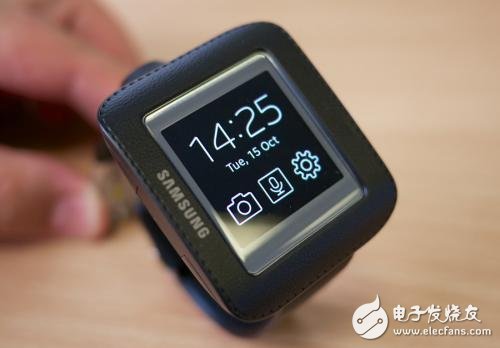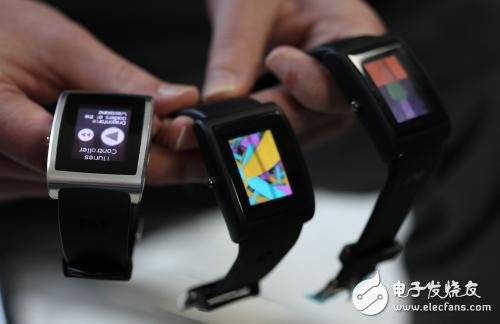At the beginning of the release of Samsung Galaxy Gear in September 2013, Forbes magazine had bluntly stated that 2013 will be the "wearable technology year." However, the use of wearable technology has grown slowly over the next three months, making the so-called "wearable technology year" not on schedule, and the US Wired magazine predicts that 2014 will witness the development of wearable technology. A major leap.

Although a number of new smart watches have emerged in 2014, including the Google Glass Project, important updates have been released, but the use of wearable technology has not broken through the necessary level to integrate into mainstream life. As a result, industry experts have once again reluctantly adjusted their predictions for wearable technology, claiming that 2015 will usher in the long-awaited "wearable technology year."
This time, the wearable market seems to be a breakthrough. Apple's new smartwatch promotes mainstream market applications, and Google Glass is fast-breaking. In the final stage of testing, almost every mobile phone manufacturer has tried to produce its own wearable devices. All of this seems to show that industry forecasts have finally become a reality. Soon after, we will see someone on the street making a phone call through a smart watch or a network video call through a head-mounted display.
However, until June 2015, the growth of wearable technology in the mainstream market is still relatively slow. Google Glass has been withdrawn from the market, and smart watches are still widely seen as an accessory to mobile phones. Perhaps 2015 has witnessed the emergence of wearable technology, but the participants in this competition are still working hard to promote wearable technology into mainstream products. As we slowly moved into the second half of 2015, many analysts changed their minds to claim that 2016 will be the "wearable technology year."

Wearable technology has been on the verge of success for many years, and it seems to be a distant goal forever. As early as 1975, when Hamilton Watch produced the world's first calculator watch, many predicted that wearable technology would become the next pandemic. However, after years of continuous experimentation, no one can effectively apply wearable technology to a wider market. Whether it's Microsoft's MSN Direct service smart watch or Oakley's Thump music glasses, it's all that proves that wearable technology is an insurmountable challenge for technology and fashion brands.
With more than 300 wearable devices in the consumer market, wearable technology has achieved breakthroughs and is almost in the mainstream market. However, its utilization rate is still slower than expected. In order to understand this phenomenon more accurately, element14 has found four major challenges that hinder the development of wearable technology. Only by overcoming these challenges will the industry’s long-awaited “Wearable Technology Year†really come, including:
1. Lack of specific standards When it comes to wearable technology, people always forget that wearable devices are almost never the most important to users. They are just front-end devices that connect to a wider communication network. In the words of technology journalist Ben Hamersley, "wearable devices are just a reduced physical representation of larger services... it can only reach its full potential through Internet connectivity."
To realize their potential, wearable devices must be deployed in the broader IoT ecosystem to interact with external Internet services and other devices within the LAN. This task is extremely complex, requiring wearables to know exactly when and when they need to communicate with other devices.
Whenever a new device is added to the wearable market, it means that the connection point must increase, eventually leading to a higher overall network density. By 2019, the global market for wearable devices is expected to grow to 126 million, which will make the interference between devices more difficult to control.
In addition, existing UHF standards, such as Wireless HD and WiGig, cannot support a large number of connections, so in order for the wearable device to successfully enter the mainstream market, a more advanced standard such as ECMA 387 is required.
2. Charging and battery life One of the most common challenges facing wearable technology is looking for smaller and more powerful battery and charging solutions. Battery life has always been a challenge for portable technology. Because of the lightness and aesthetics of wearable devices, most traditional battery solutions are not suitable. Smart watches are particularly evident on this issue, and most smart watches must be recharged every day.
This problem becomes more difficult to overcome as consumers' expectations rise. Early smart watches offered nothing more than SMS reminders and volume controls, but now consumers expect their devices to be able to run multiple applications like a mobile phone and connect to an LTE network. One of the biggest challenges is that users expect their smart watches to deliver high-definition picture quality, which allows up to 60% of the battery to be consumed instantaneously to maintain the device's screen clarity.
Given the lack of battery life is widely recognized as the most pressing challenge for wearable technology, many companies in the industry have begun to look for new solutions, such as Bluetooth Smart, an ultra-low-power solution for small portable IoT devices. With a Bluetooth Smart connection, the wearable device can distribute some functions to the user's smartphone, reducing power consumption and extending the battery life of the device.
480W Medical Power Supply,480W Medical Device Power Supply,480W Medical Power Adapter,480W Rade Power Supplies
Shenzhen Longxc Power Supply Co., Ltd , https://www.longxcpower.com